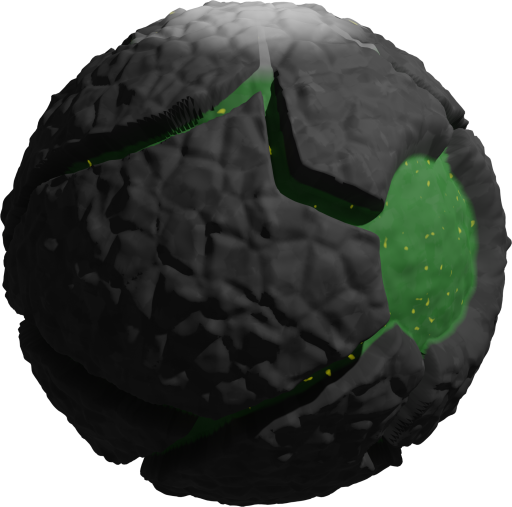BSCI-1422
BSCI-1422 is a relatively unusual type B0V main sequence star.
Mass: 14.2 × Sol
Luminosity: 10, 770.338 59 × Sol
Diameter: 7.123 × Sol (4, 955, 470 km)
Temperature: 3.818 × Sol (~22, 037° C)
Lifetime: 0.001316 × Sol (~ 12.5M years, 394.5 teraseconds)
Habitable zone: 66.77 AU - 124.57 AU
BSCI-1422 a - Rocky inner planet
- baked by radiation
- tidally locked
- basically super-mercury
Main asteroid belt
- largest portion of mass in the system
- spans between inner planet and frost line, with gaps for orbital resonances
BSCI-1422 b “Satella”
Mass: 1.87 × Jupiter (594.286 × Earth)
Radius: 1.42 × Jupiter (~99, 200 km, 15.5 × Earth)
Semi-major axis: 140 AU
Orbital period: 439.503 years
- working name - it’s a pun haha
- blue-green colour, probably from methane
- probably impeded planet formation
- captured multiple planets from the inner system
- likely contributed to the formation of the main asteroid belt
- significant trojan asteroid systems
- icy rings
BSCI-1422 b 1
Semi-major axis: 403, 046 km
Orbital Period: 104, 500 seconds
BSCI-1422 b 2
Semi-major axis: 604, 570 km
Orbital Period: 192, 000 seconds
BSCI-1422 b 3
Semi-major axis: 906, 855 km
Orbital Period: 352, 500 seconds
Orbital Infrastructure
- Blue Moon Terminal
BSCI-1422 b 4 “Sahul”

Mass: 0.53 × Earth (3.17 × 10²⁴kg)
Radius: 0.781 × Earth (4, 980km)
Circumference: 0.781 × Earth (31, 290 km)
Gravity: 0.87g (8.52m/s²)
Semi-major axis: 1, 439, 806 km
Orbital period: 705, 000 seconds (195.883 hours, 8.16 earth days)
Local day length: 87560 seconds (24 hours, 19.333.. minutes)
Local “year”: 288 days (9 months = 36 weeks with 8 days per week, 0.7996347032 × Earth year)
Escape velocity: 9.22km/s
Geostationary orbit altitude: 34506.87 km
Geostationary orbit velocity: 2.475km/s
A relatively recent large impact covered the brittle crust of this captured moon in hairline fractures. Over time, tidal forces forced the cracks further open, creating large canyons reaching down towards the mantle, where, exposed to the vacuum of space, magma from the mantle solidified into flat basalt caps covering the floor of the canyons somewhere between 30km and 40km below the nominal surface. This also contributed significantly to the cooling of the mantle and core, and brought material from the mantle up to the floor of the canyons.
Today, the canyons support a fragile biosphere and thin atmosphere.
BSCI-1422 b 5
Semi-major axis: 1, 886, 335 km
Orbital period: 1, 057, 504 seconds (293.75 hours, 12.24 days)
BSCI-1422 b 6
Semi-major axis: 3, 143, 891 km
Orbital period: 2, 275, 385 seconds



